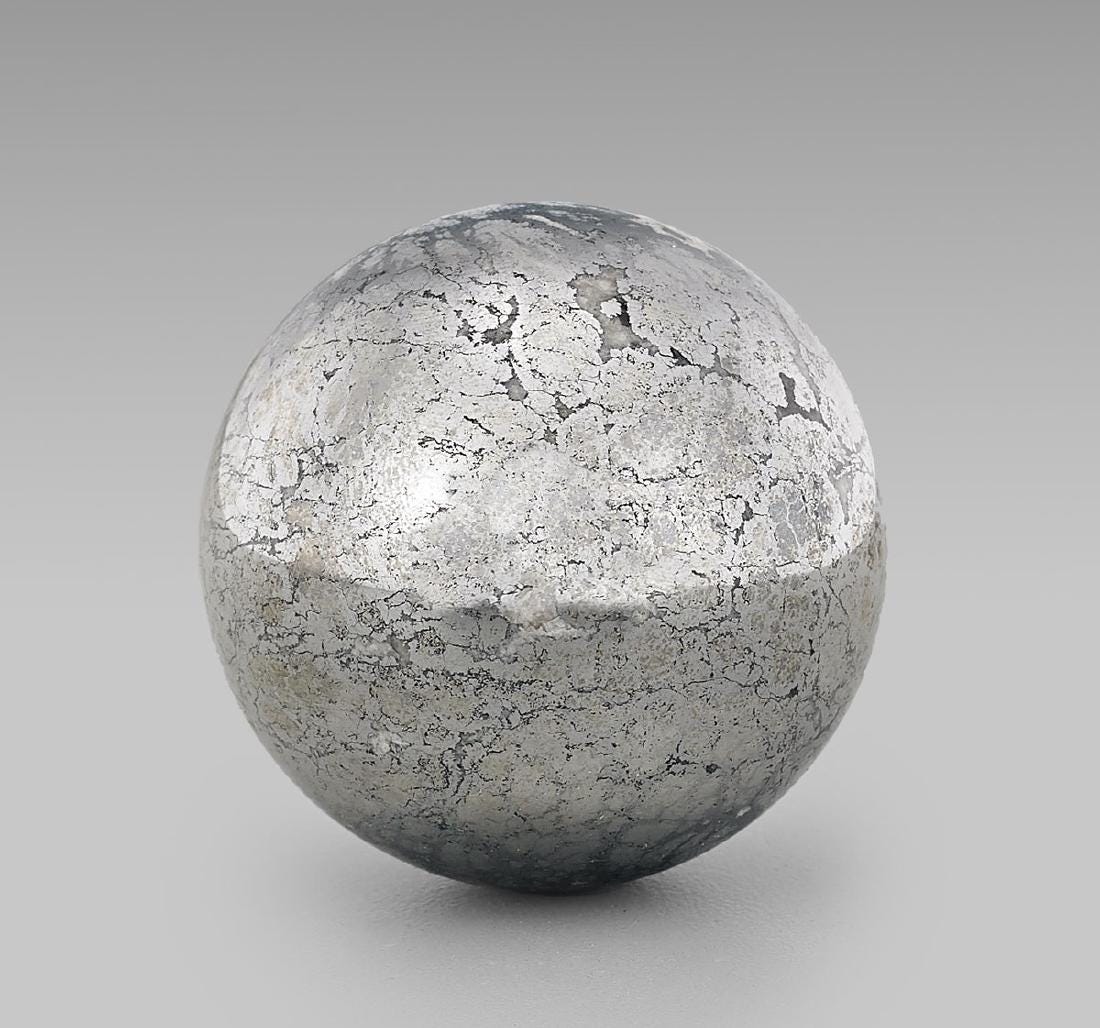Cobaltite Value, Price, and Jewelry Information
Cobaltite cabochons can have a lovely metallic luster. However, this gem material is very seldom faceted.
1 Minute Read
Cobaltite cabochons can have a lovely metallic luster. However, this gem material is very seldom faceted.
Start an IGS Membership today
for full access to our price guide (updated monthly).Cobaltite Value
What is Cobaltite?
Cobaltite is a rare sulfide mineral, used primarily as an ore for cobalt.
Does Cobaltite Make a Good Jewelry Stone?
With a hardness of 5.5 and perfect cleavage, cobaltites are suitable for jewelry with protective settings.
Although their metallic luster is their principal attraction, some specimens can also show a beautiful reddish color. Nevertheless, you're more likely to find cobaltites in a mineral collection, if at all, than in a jewelry collection.
A faceted cobaltite would probably appeal most to a completist gem collector.
Is Cobaltite Safe to Wear?
Faceters should note that cobaltite contains arsenic and cobalt. They should take precautions to prevent inhaling particles, protect their eyes, and wash their hands while cutting cobaltites.
Protective settings will help keep cobaltites from getting scratched, which can release small particles that can be accidentally ingested. However, normal jewelry wear should pose no further health risks.
How Can You Identify Cobaltite?
With a specific gravity of 6.33, cobaltite is a dense material and will feel heavier for its size than most other gemstones. However, it's actually less dense than other metallic gemstones of similar appearance: breithauptite (7.59-8.23); niccolite (7.78); and algodonite (8.38). All of these materials are also rarely faceted but occasionally cabbed.
Cobaltite has a grayish black streak. Please note that streak testing is a destructive test that should only be used on an unfinished piece as a last resort for identification.
Are There Synthetic Cobaltites?
Scientists have synthesized cobaltites for mineralogical research. However, there is no known jewelry use for this lab-created material.
There are no known gemstone enhancements for cobaltites.
Where are Cobaltites Found?
Canada, notably the aptly named Cobalt, Ontario, and Sweden, notably Tunaberg, produce masses and fine crystals.
Other notable sources include the following:
- United States: California, Colorado, Idaho.
- Western Australia; Dashkesan, Azerbaijan; Germany; India; Sonora, Mexico; Norway; Cornwall, England, UK.
Stone Sizes
Lapidaries could cut stones of any desired size from massive material.
Caring for Cobaltites
Clean cobaltites with a soft brush, mild detergent, and warm water. For more care recommendations, consult our gemstone jewelry care guide.
Joel E. Arem, Ph.D., FGA
Dr. Joel E. Arem has more than 60 years of experience in the world of gems and minerals. After obtaining his Ph.D. in Mineralogy from Harvard University, he has published numerous books that are still among the most widely used references and guidebooks on crystals, gems and minerals in the world.
Co-founder and President of numerous organizations, Dr. Arem has enjoyed a lifelong career in mineralogy and gemology. He has been a Smithsonian scientist and Curator, a consultant to many well-known companies and institutions, and a prolific author and speaker. Although his main activities have been as a gem cutter and dealer, his focus has always been education. joelarem.com
International Gem Society
Related Articles
Black Diamond Value, Price, and Jewelry Information
Chameleon Diamond Value, Price, and Jewelry Information
Gray Diamond Value, Price, and Jewelry Information
Green Diamond Value, Price, and Jewelry Information
Latest Articles
Identifying Synthetic Gems
Ten Big, Beautiful, and Affordable Engagement Ring Stones
Rhodochrosite Value, Price, and Jewelry Information
Ruby and Sapphire Survey: Where Do You Draw the Line?
Never Stop Learning
When you join the IGS community, you get trusted diamond & gemstone information when you need it.
Get Gemology Insights
Get started with the International Gem Society’s free guide to gemstone identification. Join our weekly newsletter & get a free copy of the Gem ID Checklist!
